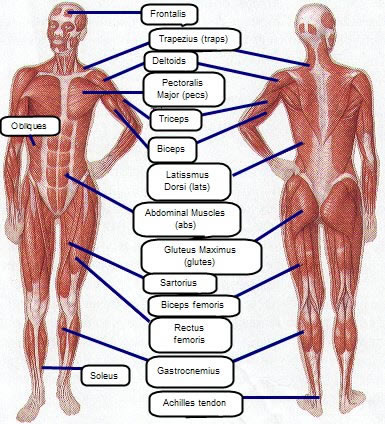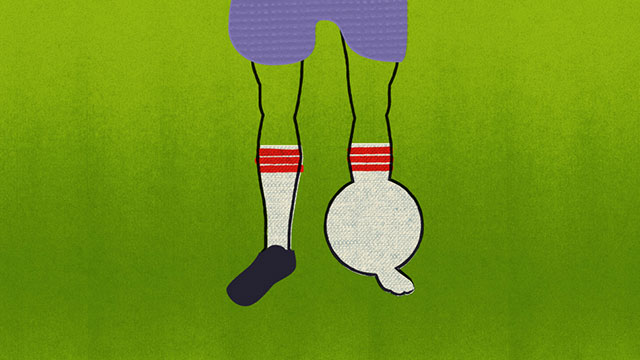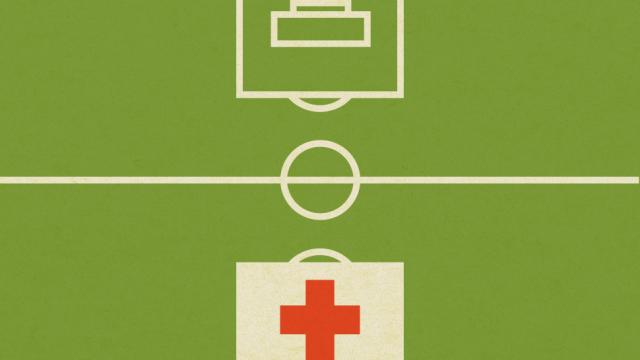Dear Lifehacker, I think I pulled a muscle in my leg while running the other day. I can still walk, but sometimes it hurts and my leg feels weak. I think it will heal with time, but what can I do to help the recovery process? Sincerely, Rigid Runner
Dear RR,
It sounds like you’re not sure exactly what happened to your leg and how serious the injury is. If you hurt yourself in any significant way, you should first see a doctor before attempting anything you learn online — including information from this post. Few major injuries occur when exercising or casually playing sports, but you should always consult a professional if you’re not sure. You may need physical therapy or greater treatment. This post, nor any other post on the internet, can tell you that.
That said, you can manage minor injuries yourself with the right approach. You can employ a few tactics by simply targeting the area in pain, but it helps to know how to identify your specific issue first.
Identify Your Specific Problem

First things first, you should identify where the injury occurred, which you can do with a simply muscle chart (like the one pictured here). Find the pain on your body and then match it with the chart to locate the damaged muscle.
Next, figure out what’s wrong with that particular muscle. Exercise and sports can cause several types of injuries, but strains and pulls are among the most common. The folks over at John Hopkins medicine explain what this type of injury feels like:
The signs of a muscle strain depend upon how severe the injury is to the muscle. In general, when it tears, there is a sudden onset of pain and you will know that you have had an injury. Muscle strains are graded as mild (first degree), moderate (second degree), or severe (third degree). A mild strain involves mostly stretching and limited tearing of the muscle fibres. It feels like the muscle is “knotted up.” There is some discomfort when you use the muscle, but there is usually little loss of strength. A person with a mild strain can often continue activity, but may have some limitation.
Muscle cramps and bruises are also common, but you can easily resolve (and prevent) cramps with proper hydration and gentle stretching. Bruises generally don’t require any special treatment, but you obviously want to protect the damaged area until it heals. Recovering from a strained or pulled muscle requires a bit more effort and time, however, and we’ll discuss what you can do in the next section.
Practise RICE Therapy

When you incur an athletic injury, remember the acronym RICE. What’s RICE? Dr Carly Stewart, medical expert at Money Crashers, explains:
One of the best ways to recover from minor sports injuries is to follow R.I.C.E. therapy: rest, ice, compress, and elevate. If you injure yourself, immediately stop the activity and rest your injured body part. Apply ice several times per day if possible for the first two days. Apply pressure to the injured area (an elastic bandage works nicely). Finally, keep the injured area elevated above your heart as much as possible.
You may need to adjust this treatment in the case of a strained or pulled muscle, however:
Ice it immediately, and then rest the muscle. If you notice any swelling, you can decrease this by gently massaging the muscle or by using anti-inflammatory medication. After a few days, you can speed up the healing process by applying heat to the muscle a few times per day, and keep it wrapped with an elastic bandage.
How does the use of cold and heat help? Dr Stewart says ice cuts down on swelling by constricting the blood vessels near the injury. Heat, on the other hand, improves blood circulation, which positively impacts recovery time. As previously mentioned, timing is key. You don’t want to apply heat early on in the injury or ice it too late or you’ll exacerbate the problem rather than promote healing.
Gentle stretching also aids in the recovery of a strained muscle, but you need to know how to perform these stretches properly and when you should perform them based on the severity of your injury. While you can take initial steps to aid in the recovery of an athletic injury, you should consult a doctor or physical therapist to learn how best to treat the problem. While you may find it frustrating to take the time to recover, with the right care, you’ll get yourself back to normal much faster than if you choose to push yourself before you’ve healed.
Cheers
Lifehacker
Got your own question you want to put to Lifehacker? Send it using our contact tab on the right.

Comments